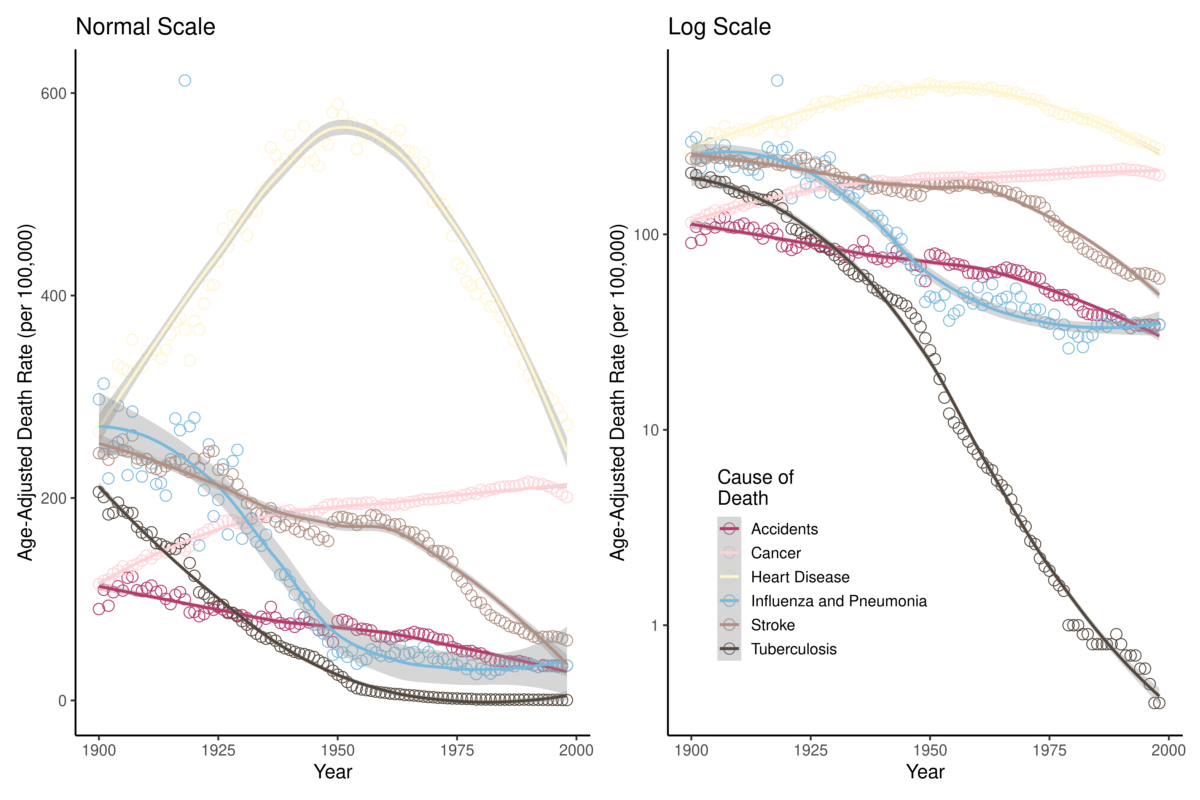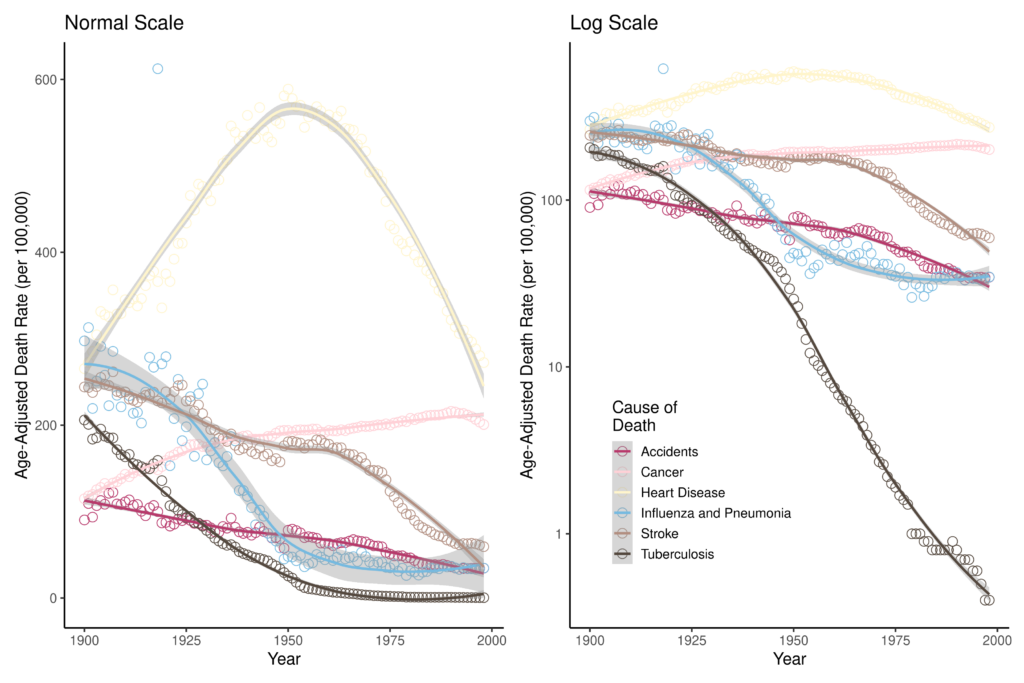
Estimating time points of significant change in cause-specific mortality: Joinpoint regression in R
Pandemic diseases, like COVID-19, have far-reaching effects that are difficult to identify or predict during the course of the pandemic itself. Case numbers and mortality due to pandemic diseases ebb and flow, but even after time has passed, it is useful to know (1) when the waves occurred, (2) if the pandemic disease had effects on the epidemiology of other chronic and/or infectious conditions, and (3) if we can learn more detail about inequalities in pandemic experience.
There are statistical modeling methods that allow researchers to study how rates of interest change at predetermined or statistically estimated points in a time series, namely piecewise, segmented, or spline regression. Another simple yet sparsely used modeling technique, Joinpoint regression can identify significant points of change in rates in a time series without requiring the researcher to input the location of potential points of change. One of the clearest applications today is the ability to identify changing rates in COVID-19 dynamics: How do we identify the beginning of a “wave” of COVID-19 morbidity or mortality? How are vaccination rates changing over time? How will we know when the COVID-19 pandemic is over?
It may be a while before all of these questions can be answered about the COVID-19 pandemic, but researchers can turn to historical pandemic events to better understand how they influence epidemiology of other diseases and demography. To learn more about historical mortality dynamics around the 1918 influenza pandemic, Taylor van Doren uses the joinpoint regression method to identify points of change in tuberculosis mortality during the early 20th century in Newfoundland, the progression of which is thought to be dependent on–or at least influenced by–the 1918 pandemic. The results show that tuberculosis mortality did not change after the 1918 flu pandemic in the study population, even though previous research by others has identified significant post-1918 flu declines in tuberculosis mortality in the U.S. Historical epidemiologists who study much older records (e.g., 17th-19th century) leverage the non-mutually exclusive nature of infectious diseases and focus on analyses of all-cause mortality. Joinpoint regression would be a useful tool for retroactively identifying moments of epidemic or pandemic activity, since the researcher need not know precisely where significant points of rate change occurred before those points are statistically estimated. This can ultimately help uncover missed waves or disease associations that could be useful to know in a modern context.
As we move towards a post-COVID-19 future, the joinpoint regression method would be useful to identify the different progression of the COVID waves through different populations, how burdens of other conditions (cardiovascular diseases, disability, chronic respiratory diseases) may increase in the future, and more.

Computation & Reproducibility
All code necessary to implement the methods and reproduce the figures and results in Knowing and understanding change: Methods insights using historical pandemic data has been archived as of publication on April 17, 2024 by the Population Dynamics Lab here: UW PopLab Github.
Suggested Citations
(2024, April 17). Knowing and understanding change: Methods insights using historical pandemic data. The Download, Population Dynamics Lab. https://population-dynamics-lab.csde.washington.edu/blog/2024/04/17/understanding-change-methods/ [Accessed July 27, 2024].
and (2024). Knowing and understanding change: Methods insights using historical pandemic data: Computation Supplement. The Denominator, Population Dynamics Lab. https://github.com/Population-Dynamics-Lab/joinpoint-regression-tutorial/ [Accessed July 27, 2024].
[DOI Link:] https://doi.org/10.6069/HHRJ-QJ86
